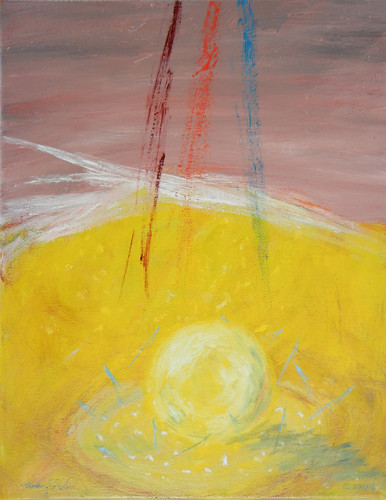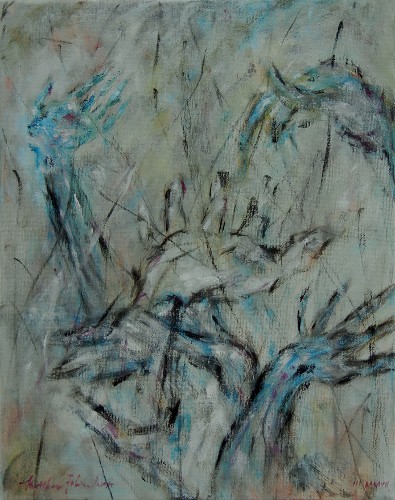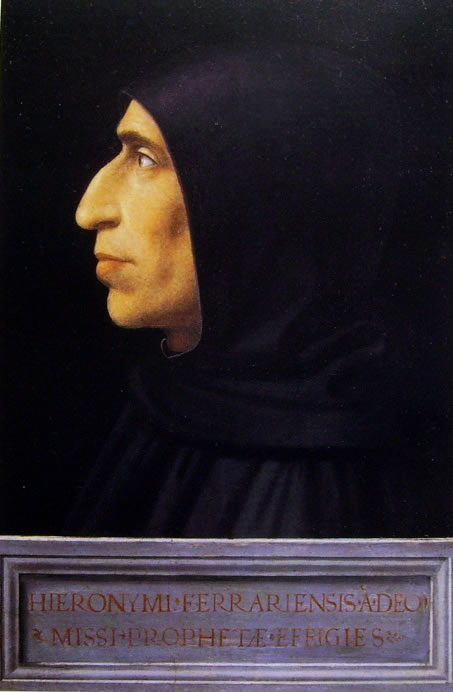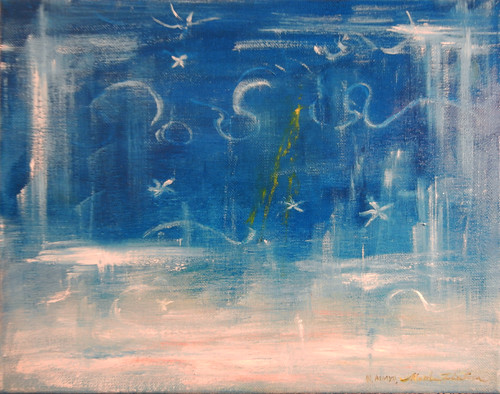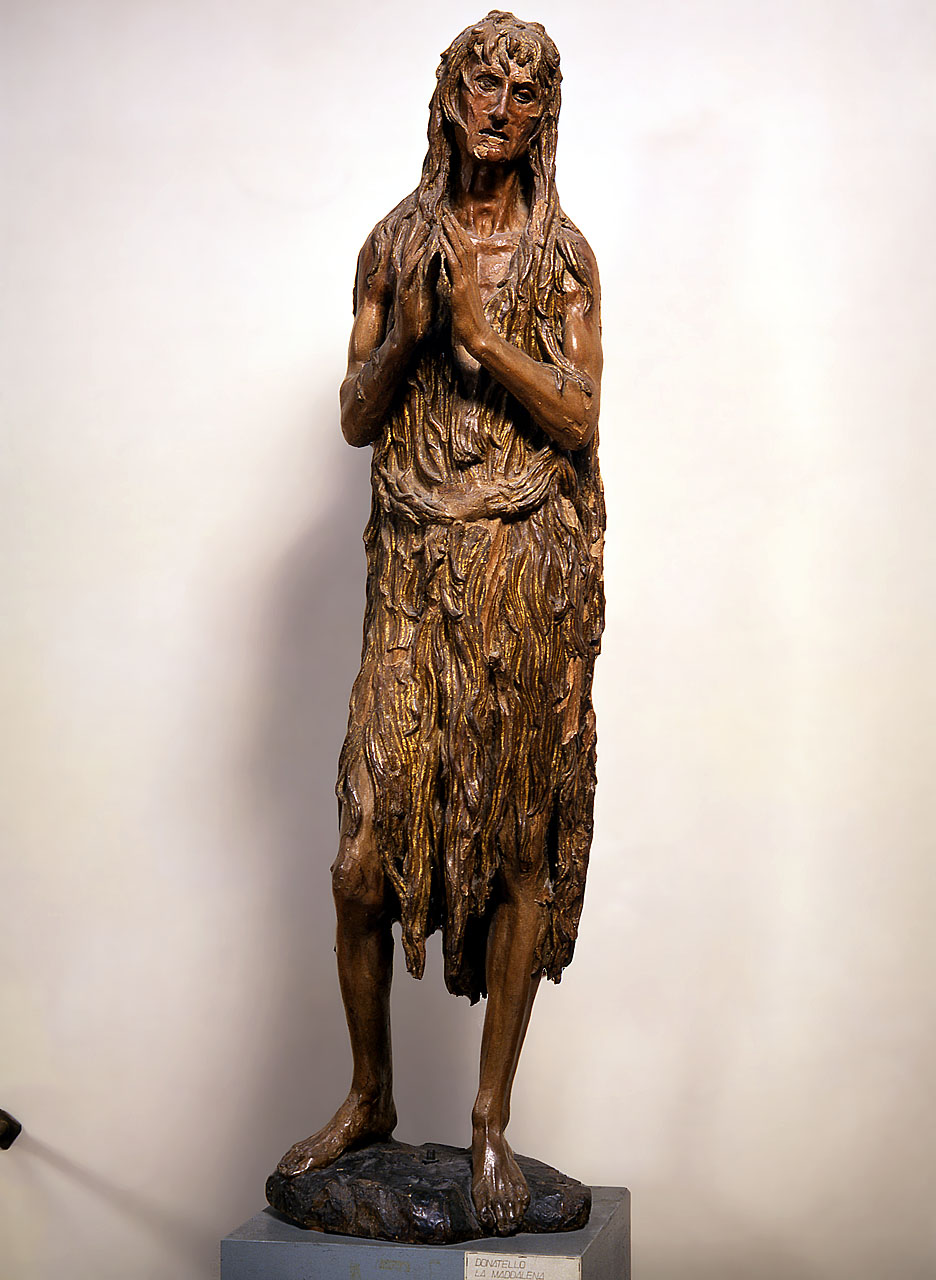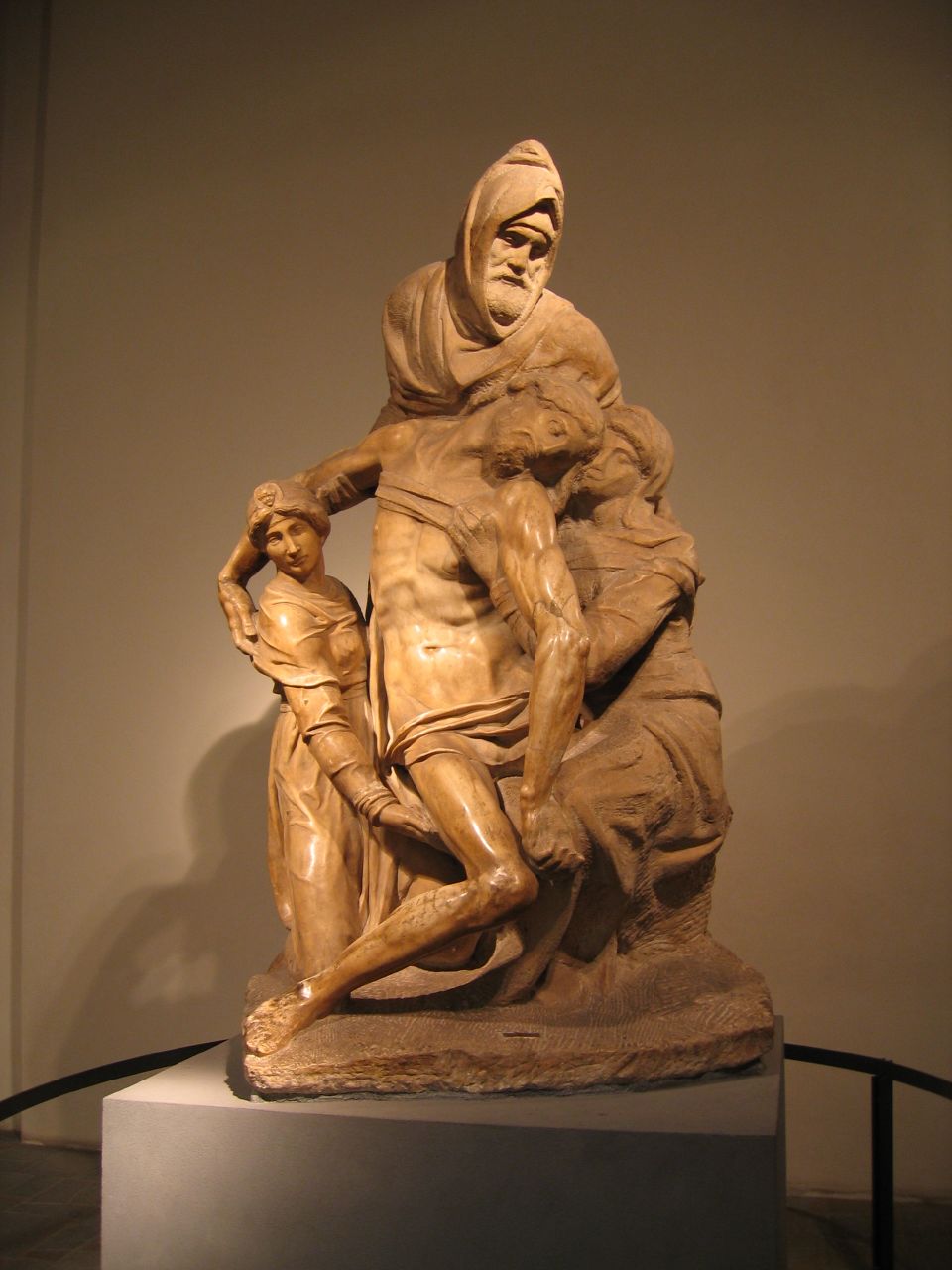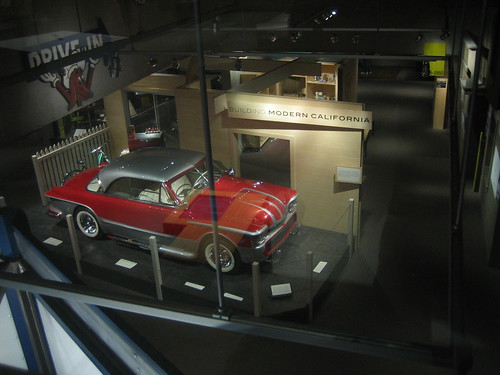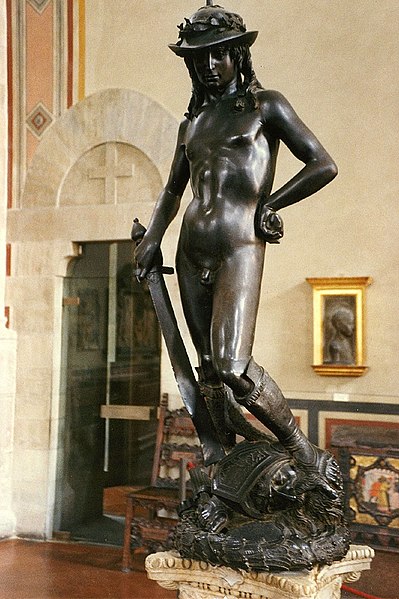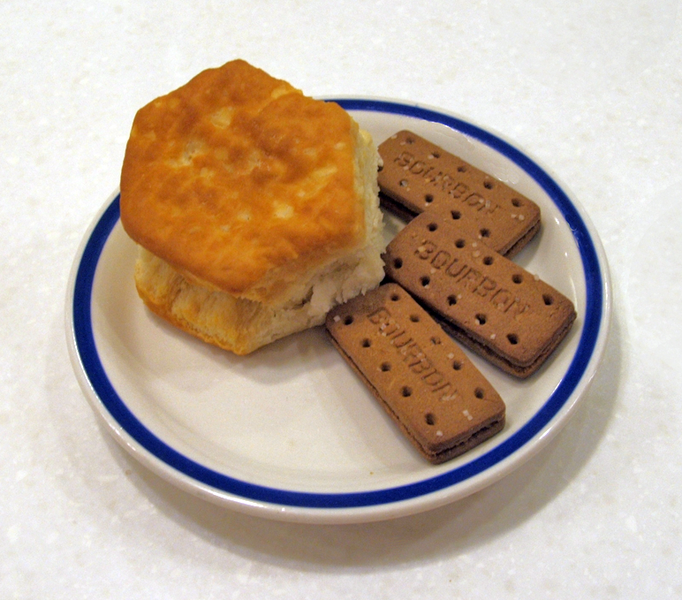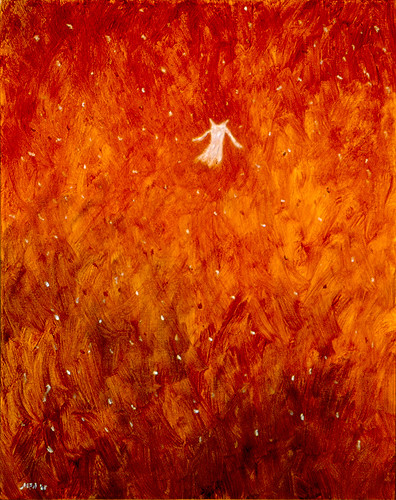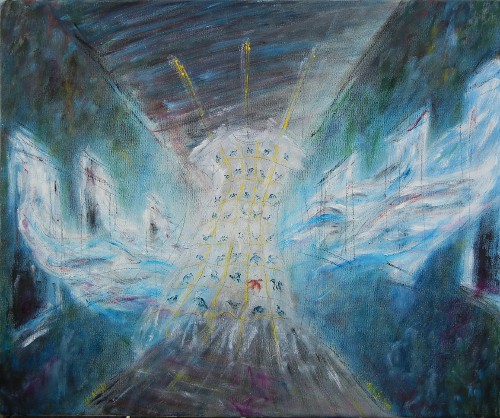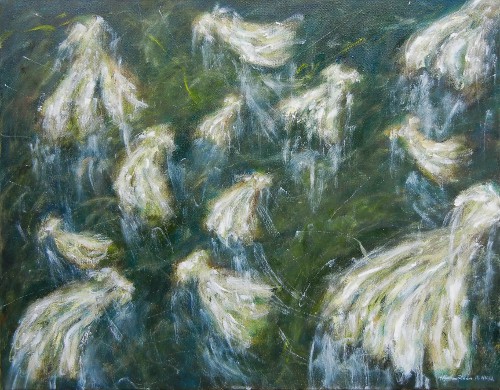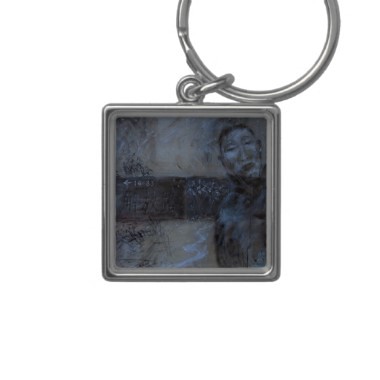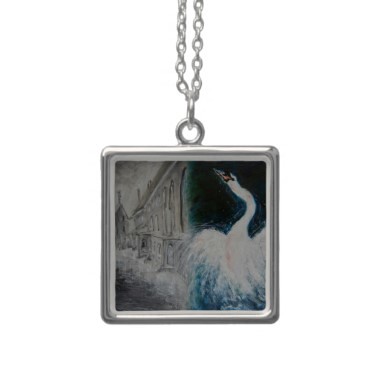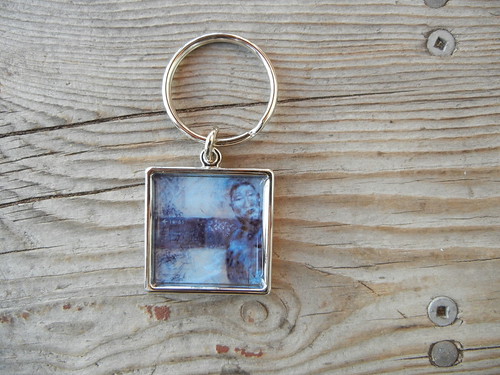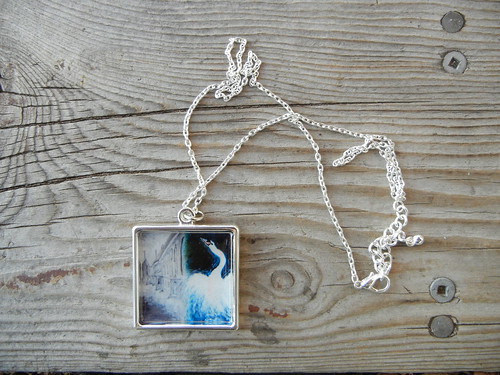Palazzo Vecchio (Old Palace), the ancient city hall of the Renaissance Florence, was another landmark dominating the Florentine sky, along with the great Duomo.
Though it was a governmental building, it still accumulated some impressive art or civic collections. At the entrance to it, was the wonderful replica of Michelangelo's David in the spot the original one had stood before being moved to
Galleria dell'Accademia Firenze for better protections.
The interior of this Romanesque fortress was truly impressive - the civic pride of the Renaissance Florentines were evident everywhere, particularly in the two great art pieces I like most.
The first one was another marble by Michelangelo, the Genius of Victory:
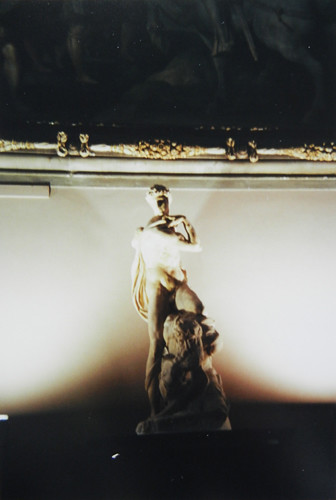
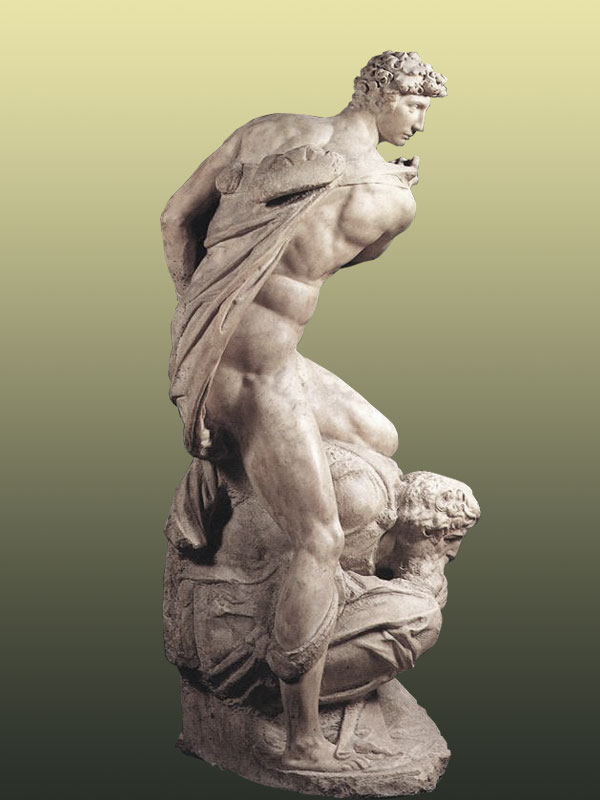
Michelangelo Buonarroti
The Genius of victory
c. 1532–1534
Height 261 cm
Though not commissioned for this site, it fit the characteristics and the civic pride of the people perfectly. The Victory figure, a youth in the mannerism
Figura Serpintina pose, graceful, rather casually, and easily pinned down the conquered rival - think of either Sienna or Pisa, the great rivals of Firenze - a powerful bearded figure in awkward and humiliating submission. The contrast between the young and the old, the easy and contorted poses, the serene and anguished expressions were vivid and tangible. The marble was tall but not gigantic as
David, which was practically human scaled. For the larger than life renditions of Florentine victories, one had to look at the immense frescoes by Giorgio Vasari, artist and art critics, in Salone dei Cinquecento, depict battles and military victories by Florence over Pisa and Siena.
The enormous chamber measured 52 m (170 ft) by 23 m (75 ft). It was built in 1494 and later enlarged by
Giorgio Vasari.
During this transformation famous (but
unfinished) works were lost,
including the
Battle of Cascina by Michelangelo,
and the
Battle of Anghiari by
Leonardo da Vinci.
Wikipedia described Leonardo's work in the paragraph below:
Leonardo was commissioned in 1503 to paint one long wall with a battle scene celebrating a famous Florentine victory. He was always trying new methods and materials and decided to mix wax into his pigments. Leonardo had finished painting part of the wall, but it wasn't drying fast enough, so he brought in braziers stoked with hot coals to try to hurry the process. As others watched in horror, the wax in the fresco melted under the intense heat and the colors ran down the walls to puddle on the floor. Michelangelo never even got past making the preparatory drawings for the fresco he was supposed to paint on the opposite wall—Pope Julius II called him to Rome to paint the Sistine Chapel, and the master's sketches were destroyed by eager young artists who came to study them and took away scraps. The surviving decorations in this hall were made between 1555 and 1572 by Giorgio Vasari and his helpers, among them Livio Agresti from Forlì. They mark the culmination of mannerism and make this hall the showpiece of the palace.
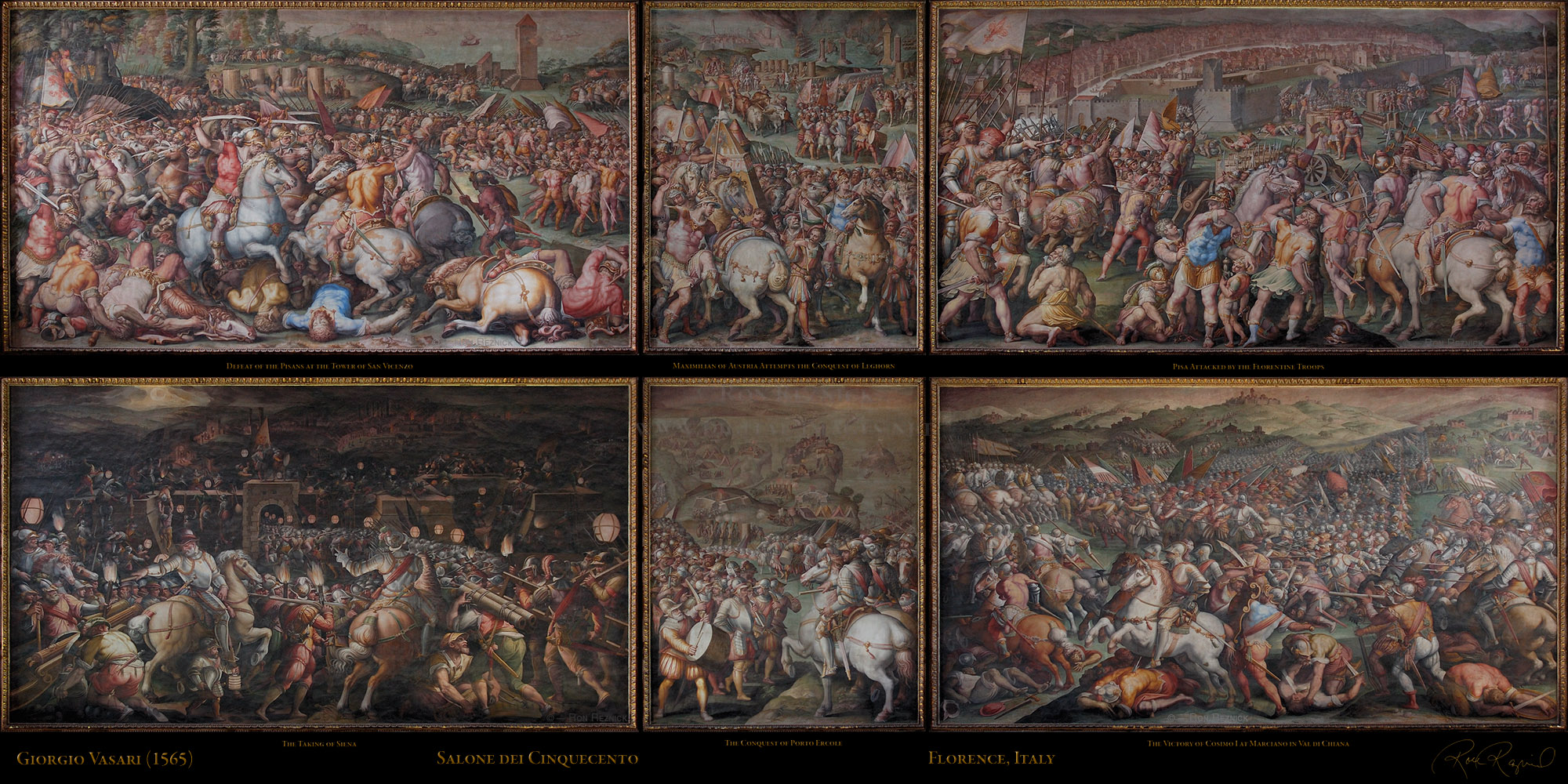
(
Large image)
The Vasari Frescoes
1555-1572
Top (Pisa), left to right:
Defeat of the Pisans at the Tower of San Vicenzo;
Maximilian of Austria Attempts the Conquest of Leghorn
(also called: Siege of Livorno Lifted in 1496);
Pisa Attacked by the Florentine Troops
(also called: The Battle of Stampace in 1499)
Bottom (Siena), left to right:
The Taking of Siena
(also called: Conquest of the Fortress near the Porta Camollia in 1554);
The Conquest of Porto Ercole;
The Victory of Cosimo I at Marciano in Val di Chiana
(also called the Battle of Scannagallo in the Val di Chiana in 1554)
I truly love these frescoes for their ambitious topics, impressive compositions, vivid atmosphere, fluid execution and slight pomposity (the victories were minor and inconclusive). These frescoes were great treasure to be relished.
Thus I must discuss a great controversy regarding these frescoes and that lost one by Leonardo.
San Francisco Chronicle reported that
But buried beneath one of the four frescoed walls [by Vasari] may lie a treasure
of far greater importance - one that has not been seen for five
centuries: a lost painting by Leonardo da Vinci.
In 1505, Leonardo began painting one wall of the meeting hall, a tangle of swords and horsemen called "Battle of Anghiari." He was called away shortly after he had begun, and we know what his unfinished battle scene looked like only from a copy made by Rubens.
The man hunting the lost Leonardo, Maurizio Seracini, has been called the "real Indiana Jones."
Back in 1975, Seracini noticed a tiny bit of text hidden within Vasari's frescoes in the Salone dei Cinquecento. On one frescoed wall, Vasari had painted exactly two words. Cerca trova. (Seek and you shall find.)
Seracini and many leading Leonardo scholars believe this to be a real clue from Vasari, indicating that he somehow preserved Leonardo's work - that this lost painting is hidden
beneath a false wall onto which Vasari painted his own frescoes.
In 2006 that Seracini finally discovered a 1.5-inch hollow gap between the back of Vasari's frescoed wall and a second wall behind it. This double wall, which Vasari must have built when he painted the frescoes, is unheard of, and has no architectural or structural rationale. Further, the gap is only behind one of Vasari's four frescoed walls - the one with the words cerca trova written on it.
On March 12, UCSD announced that, by drilling through the Vasari fresco, Seracini's team found a black pigment that matched pigment used in Leonardo's Mona Lisa, suggesting that something lies beneath after all. This is promising, because many fear that the riceless Vasari fresco is being partially destroyed during this investigation for naught. Important art historians have signed a petition to stop the investigation because it is damaging the Vasari, and may end up as a wild goose chase.
The search continues, as the art world eagerly awaits what would be the biggest discovery of the century. But if Seracini succeeds, then we are faced with one more puzzle: How do we reveal the entire Leonardo without destroying the Vasari that lies above it?
I tried to be excited about the discovery of a Leonardo, which is a major event for sure, like the recent discovery of a copy of the great
Mona Lisa, whose colors deteriorated less than the original, therefore less smoky à la Leonardo, and more typical early Renaissance. Below pictures [source: npr.org], show side by side of the copy and Leonardo's original. The copy has many more details obscured on the original version.


But, in order to find a remotely possible work, definitely unfinished, even by the incomparable Leonardo, while permanently, irrevocably destroying a wonderful masterpiece, it highly irresponsible and the treasure hunter, truly preposterous.
My Favorite Museum Collection Series
>> My Favorite Museum Collection Series 21: My Favorite Artworks at Museo di San Marco, Firenze
<< My Favorite Museum Collection Series 19: My Favorite Sculptures at Museo dell'Opera del Duomo (Florence)
